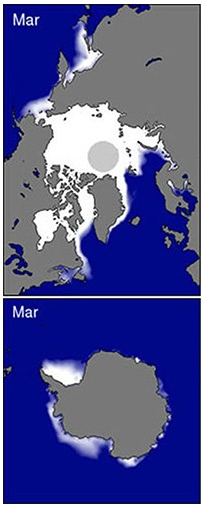What are the differences between meridians and parallels?
What will be an ideal response?
Answer: A meridian is an arc drawn between the North and South poles. The location of each meridian (each line of longitude) is identified on Earth's surface according to a numbering system. The meridian that passes through the Royal Observatory at Greenwich, England, is 0° longitude, also called the prime meridian. The meridian on the opposite side of the globe from the prime meridian is 180° longitude.
A parallel, on the other hand, is a circle drawn around the globe parallel to the equator and at right angles to the meridians. The numbering system to indicate the location of a parallel is called latitude. The equator is 0° latitude, the North Pole 90° north latitude, and the South Pole 90°south latitude.
Although both meridians and parallels are imaginary lines, parallels are as the name implies - they run parallel to each other. So, in actual fact, the distance between one parallel and the next will never change. Meridians, on the other hand, are not even parallel along the equator, because as one moves north or south of the equator, the distance between one meridian and the next narrows until they converge at the poles.
You might also like to view...
Which factor best explains the difference in March sea ice between March in the northern hemisphere and March in the southern hemisphere?

A) Low sun angle throughout the year
B) High albedo for all surfaces
C) Seasonal variation in daylength
D) Continentality for all surfaces
Discuss the changes in views of the principle of uniformitarianism from James Hutton to the
present day. What new scientific data have caused this change in our views of uniformitarianism? What will be an ideal response?
An analysis of the map of U.S. soft drink terminology shows that the word "pop" is more common in
a. Oregon. b. New Mexico. c. Mississippi. d. Florida. e. California.
Some people blame white-tailed deer for invading suburban yards and gardens. Discuss potential solutions to this problem.
What will be an ideal response?